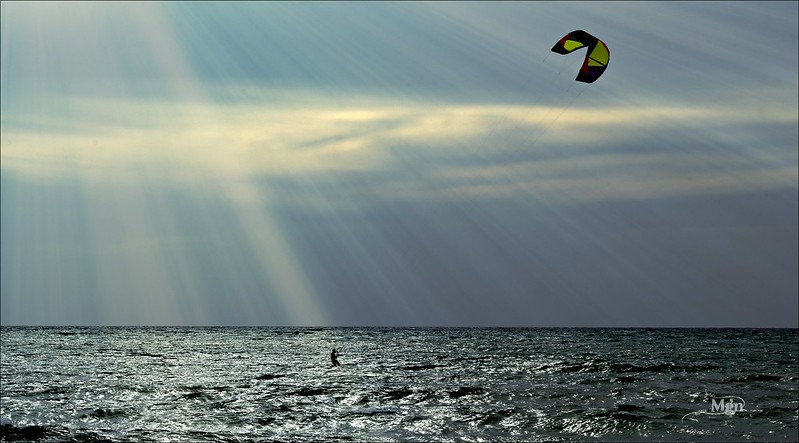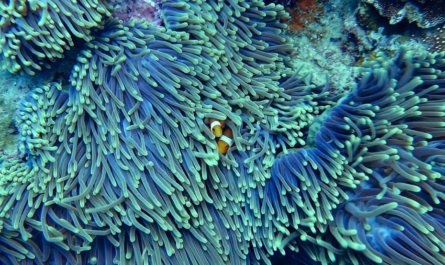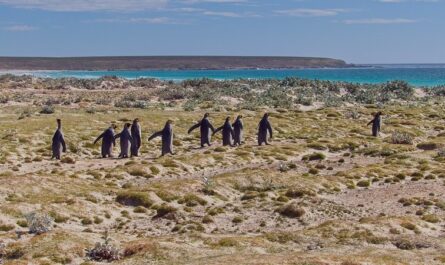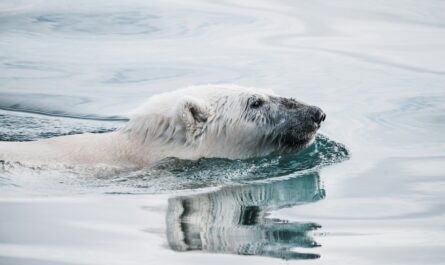The Bahamas, an archipelago of more than 700 islands and cays, is surrounded by crystal-clear waters that host a remarkable diversity of marine life. Known for its thriving reef ecosystems, shark populations, and conservation initiatives, the Bahamas has become a haven for marine biodiversity and a model for marine conservation. The nation’s commitment to preserving its marine resources is evident in its extensive network of marine protected areas and its pioneering role in establishing a shark sanctuary. For divers, researchers, and nature lovers, the Bahamas offers an unparalleled glimpse into the vibrant underwater world of the Atlantic.
This article explores the incredible marine life found in the Bahamas, highlighting its rich reef ecosystems, shark sanctuaries, and the conservation efforts that are helping to safeguard this natural treasure for future generations.
The Bahamas’ Reef Ecosystems: Coral Reefs and Marine Biodiversity
The coral reefs of the Bahamas are among the most diverse and vibrant ecosystems in the Atlantic Ocean. These reefs support a wide array of marine species, providing habitats, food sources, and breeding grounds for countless organisms. Coral reefs are essential not only for marine life but also for the local economy, as they attract millions of tourists each year for diving and snorkeling, and serve as a natural barrier against coastal erosion.
The Importance of Coral Reefs in the Bahamas
Coral reefs cover about 5,000 square miles of the Bahamian seafloor, making them one of the largest reef systems in the world. They support a diverse range of species, including fish, crustaceans, mollusks, and invertebrates, all of which play essential roles in maintaining the ecosystem’s health and balance.
- Parrotfish: These colorful fish are critical to coral health, as they graze on algae that would otherwise smother corals. Parrotfish help keep reefs clean and free from overgrown algae, allowing corals to thrive.
- Angelfish, Snappers, and Groupers: These fish are key players in the food web, supporting a variety of predators and contributing to the reef’s biodiversity.
- Coral Species: Brain coral, elkhorn coral, and staghorn coral are among the species found in the Bahamas. Coral reefs provide habitats and nurseries for many fish species and are integral to the overall health of the marine ecosystem.
Threats to Coral Reefs
Despite their importance, coral reefs in the Bahamas face several threats, most notably climate change, coral bleaching, overfishing, and pollution. Rising sea temperatures and ocean acidification, both driven by climate change, are causing coral bleaching, which weakens corals and makes them more susceptible to disease. Overfishing disrupts the ecological balance, impacting species that play vital roles in reef health. Furthermore, pollution from coastal development and agricultural runoff can harm reefs by introducing harmful chemicals and nutrients into the water.
To address these issues, the Bahamas has implemented various conservation strategies, including establishing marine protected areas (MPAs) and engaging in coral restoration projects. Local organizations, often in collaboration with international marine science institutions, are working to rehabilitate damaged reefs and promote sustainable fishing practices to support reef resilience.
Shark Sanctuaries: Protecting Apex Predators in Bahamian Waters
The Bahamas is known as the “Shark Capital of the World” and has one of the highest concentrations of sharks globally. In 2011, the Bahamas took a pioneering step by establishing a shark sanctuary, effectively banning commercial shark fishing throughout its waters. This decision made the Bahamas one of the first countries to declare its entire exclusive economic zone (EEZ) a sanctuary for sharks, protecting them from fishing, trade, and exploitation.
Why Sharks Are Essential to the Marine Ecosystem
Sharks play a critical role as apex predators in marine ecosystems, maintaining the balance of species populations below them in the food chain. By controlling populations of prey species, sharks help prevent overgrazing of seagrass beds and coral reefs, which is essential for the health and productivity of these ecosystems.
Without sharks, the marine ecosystem could fall out of balance, leading to a cascade of negative effects. For example, an overpopulation of certain fish species could result in excessive predation on herbivorous fish like parrotfish, which in turn could lead to algae overgrowth on coral reefs.
Shark Tourism in the Bahamas
The establishment of the shark sanctuary has transformed the Bahamas into a premier destination for shark tourism. Visitors from around the world come to dive and snorkel with sharks in their natural habitat. Species commonly encountered include Caribbean reef sharks, nurse sharks, tiger sharks, and even great hammerheads.
Shark tourism has provided substantial economic benefits to the Bahamas, generating millions of dollars annually for the local economy. In fact, a living shark is estimated to be worth far more to the Bahamian economy in terms of tourism revenue than a dead shark would be in terms of fishing profits. This economic incentive has strengthened public support for shark conservation, helping to secure the species’ future in Bahamian waters.
Key Marine Species in Bahamian Waters
Beyond sharks and coral reefs, the Bahamas’ waters are home to a diverse range of marine species, each contributing to the ecosystem’s complex web of life.
Sea Turtles
The Bahamas is a crucial habitat for several species of sea turtles, including the green turtle, hawksbill turtle, and loggerhead turtle. These turtles are integral to marine ecosystems, helping to maintain healthy seagrass beds and coral reefs. For example, green turtles graze on seagrass, which promotes growth and prevents it from becoming overgrown.
Despite legal protections, sea turtles face threats from habitat loss, poaching, and plastic pollution. Conservation organizations in the Bahamas work to monitor and protect turtle populations, conducting beach patrols, protecting nesting sites, and educating the public about the importance of sea turtles to marine ecosystems.
Dolphins
The Bahamas is known for its Atlantic spotted dolphins and bottlenose dolphins, which are commonly found in shallow, warm waters around the islands. These intelligent and social animals are popular attractions for ecotourism, with many visitors participating in dolphin-watching tours.
Dolphins contribute to the marine ecosystem by controlling fish populations and interacting with other marine species. While dolphins are generally protected in the Bahamas, they face threats from marine traffic and plastic pollution. Tourism operators are encouraged to follow ethical practices to minimize disturbances to dolphin populations.
Nassau Grouper
The Nassau grouper is a large, reef-dwelling fish that is important both ecologically and economically. Known for its distinctive markings and impressive size, the Nassau grouper plays a vital role in the reef ecosystem by controlling populations of smaller fish. However, due to overfishing, the Nassau grouper has become endangered, and conservation efforts are underway to protect this species from extinction.
To support the recovery of Nassau grouper populations, the Bahamas has implemented seasonal fishing bans during spawning periods. These bans are crucial for allowing the species to reproduce and replenish its numbers in the wild.
Conservation Efforts in the Bahamas
Recognizing the importance of its marine resources, the Bahamas has undertaken numerous conservation initiatives to protect its unique marine life. These efforts include establishing marine protected areas, promoting sustainable tourism, and collaborating with international organizations to advance conservation science.
Marine Protected Areas (MPAs)
The Bahamas has designated several areas as Marine Protected Areas (MPAs), which are critical for conserving biodiversity and allowing fish populations to recover. Some well-known MPAs in the Bahamas include the Exuma Cays Land and Sea Park and the Andros Barrier Reef. These protected zones limit fishing, development, and other human activities that could harm marine ecosystems.
MPAs not only provide refuge for endangered species but also serve as essential nurseries for young marine life. By preserving critical habitats, MPAs contribute to healthier fish stocks, which benefits both the ecosystem and local fishing communities.
Coral Restoration Projects
To combat the decline of coral reefs, the Bahamas has initiated coral restoration projects aimed at rehabilitating damaged reefs. Coral nurseries, where young corals are grown and later transplanted to degraded reef areas, have shown promise in restoring coral populations. These nurseries support the regrowth of corals, enhancing biodiversity and improving the overall health of reef ecosystems.
Organizations like BREEF (Bahamas Reef Environment Educational Foundation) play an active role in coral restoration, conducting research and engaging local communities in conservation efforts.
Public Education and Community Involvement
Raising public awareness is a cornerstone of conservation in the Bahamas. Many local and international organizations work to educate residents, schoolchildren, and tourists about the importance of marine conservation. Programs like the Bahamas National Trust provide educational resources, organize beach cleanups, and conduct workshops to promote sustainable practices.
Local communities are also encouraged to participate in conservation efforts, especially in protecting sea turtles, monitoring fish populations, and reporting illegal fishing activities. By fostering a culture of stewardship, the Bahamas aims to ensure that future generations can enjoy and benefit from its rich marine resources.
Challenges to Marine Conservation in the Bahamas
Despite its successes, the Bahamas faces challenges in conserving its marine resources. Climate change, particularly warming seas and ocean acidification, poses a long-term threat to coral reefs and marine life. Rising temperatures can lead to coral bleaching, while acidification affects the ability of marine organisms to build shells and skeletons.
Additionally, plastic pollution, coastal development, and unsustainable tourism practices put pressure on the marine ecosystem. Addressing these issues requires a combination of local action, international collaboration, and continued investment in conservation and research.
Conclusion: A Model for Marine Conservation
The Bahamas has set a global example for marine conservation through its shark sanctuary, marine protected areas, and coral restoration projects. Its diverse marine life, from vibrant coral reefs and majestic sharks to endangered sea turtles, underscores the importance of preserving the ocean’s ecosystems.
As climate change and human activities continue to threaten marine environments worldwide, the Bahamas’ approach to conservation offers hope and inspiration. By balancing sustainable tourism with environmental protection, the Bahamas shows that it is possible to safeguard marine life while supporting the economy. Through education, community involvement, and robust conservation policies, the Bahamas is ensuring that its oceans remain a thriving haven for marine biodiversity.



